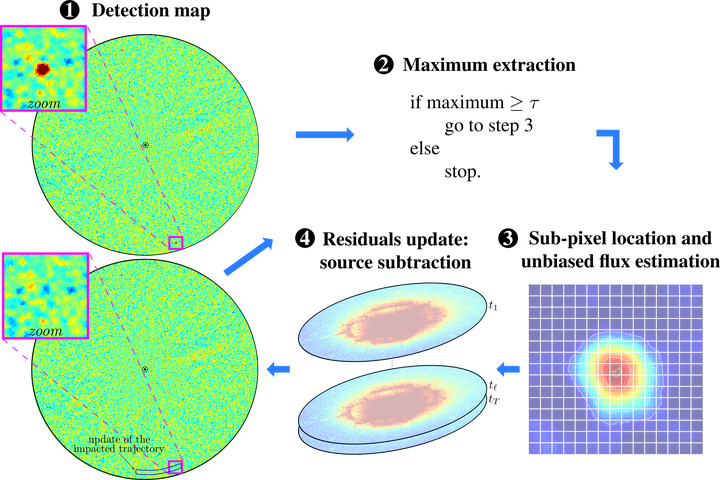An unsupervised patch-based approach for exoplanet detection by direct imaging
In IEEE International Conference on Image Processing (ICIP)
 Synopsis of the PACO processing pipeline
Synopsis of the PACO processing pipeline
Abstract
The search for exoplanet is a very active topic in astronomy. Exoplanet detection by direct imaging requires both dedicated instruments to mask out the host star and careful image processing methods. Data processing is challenging because the exoplanet signal is very faint and hidden in a much stronger non-stationary background displaying strong spatial correlations. In contrast to previous detection methods, we explicitly model the spatial correlations of the background and design a completely unsupervised method that accounts for the background non-stationarity. From a time series of observations, we learn a local model of the distribution of background patches. Significant sources are then detected with a generalized likelihood ratio test. The sub-pixel location and flux of each detected exoplanet are estimated jointly to a refining of the background model. Each detected source is removed from the data, following an orthogonal matching pursuit strategy. The stopping criterion is based on a control of false alarms. We compare the proposed algorithm to three state-of-the-art exoplanet detection methods on datasets obtained with SPHERE instrument operating at the Very Large Telescope (VLT) in Chile. We show a drastic improvement of the sensibility and much fewer false detections.